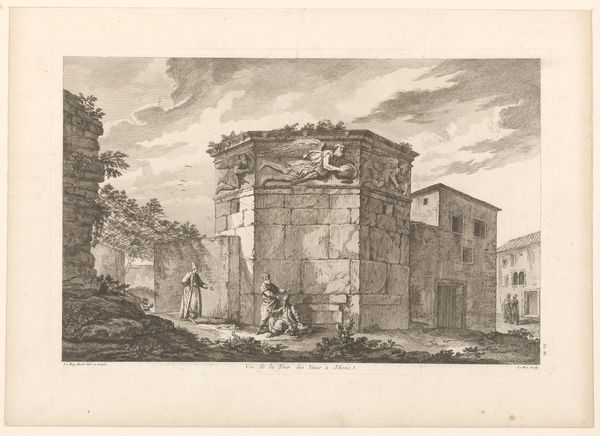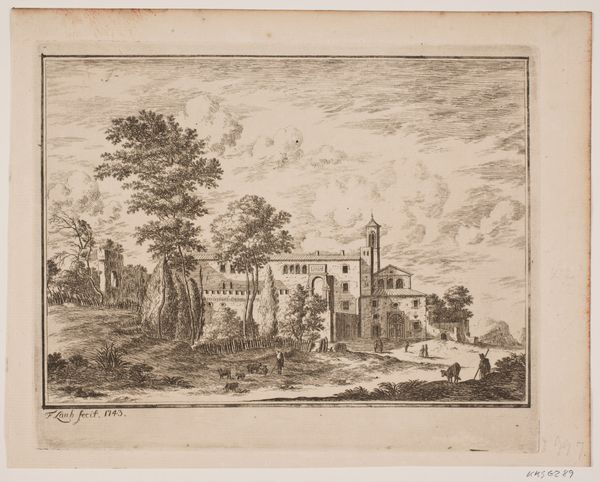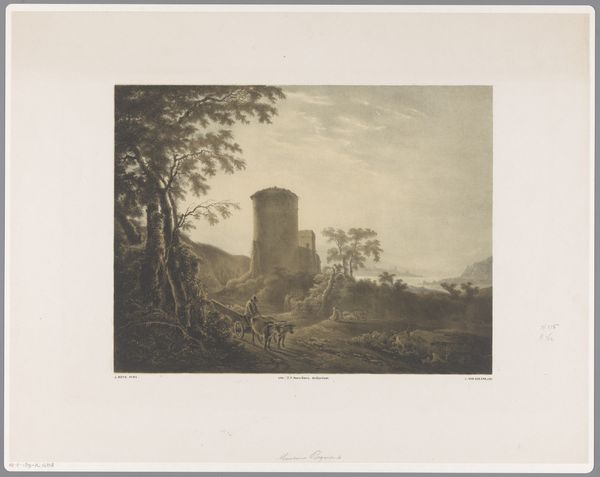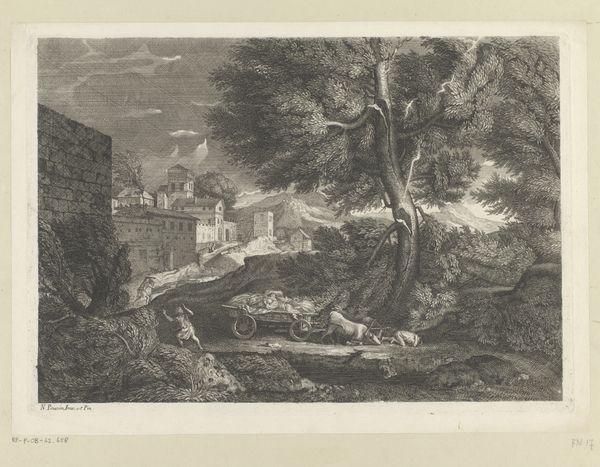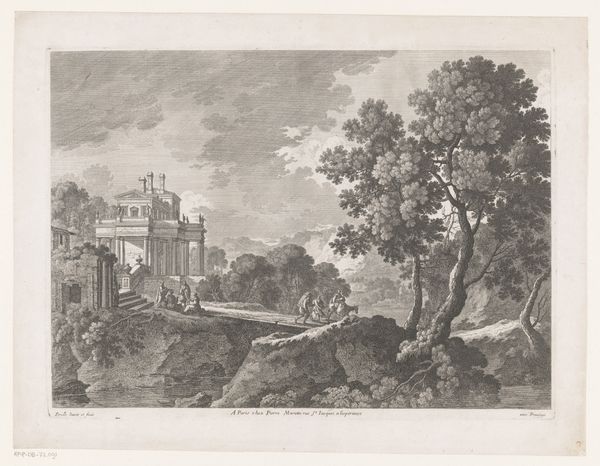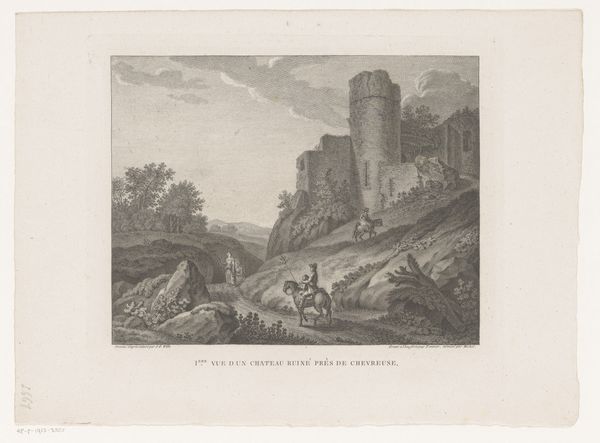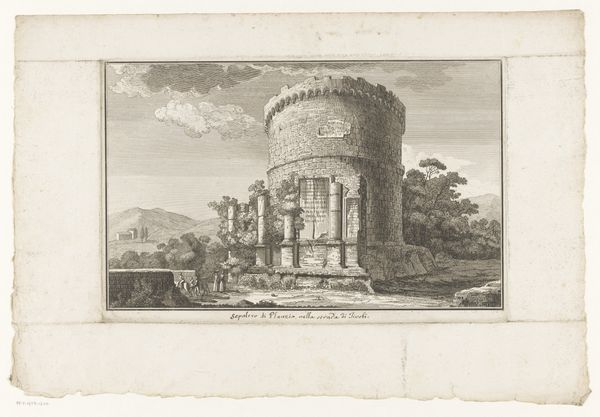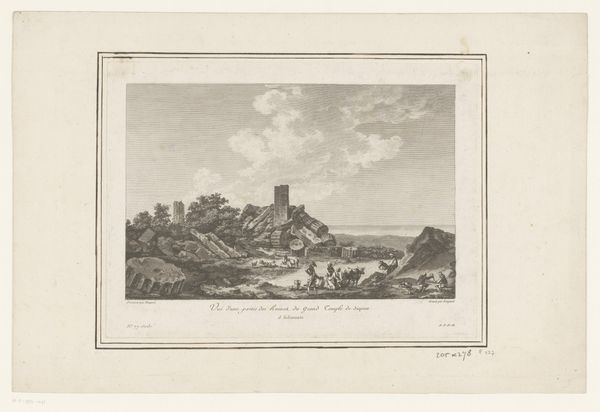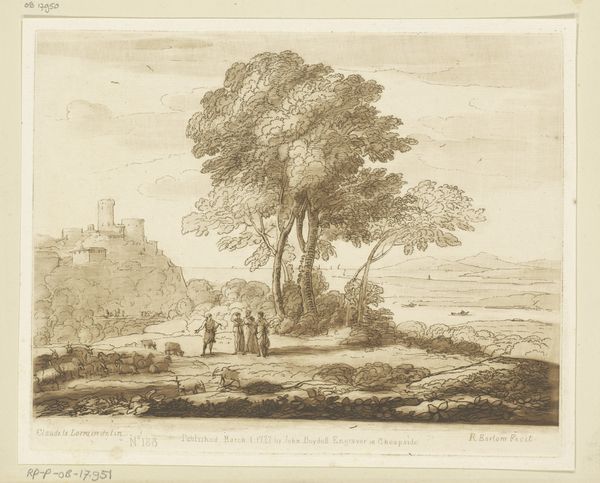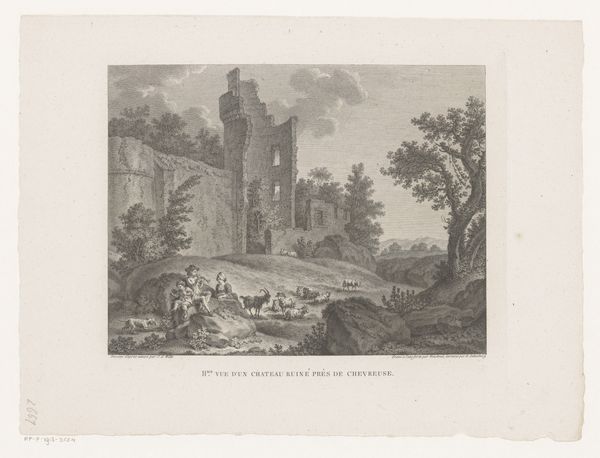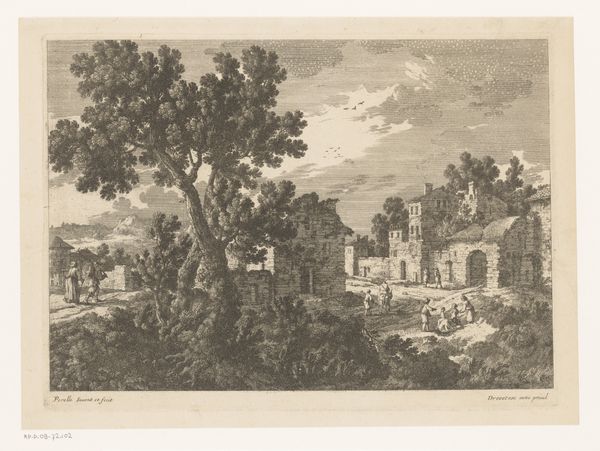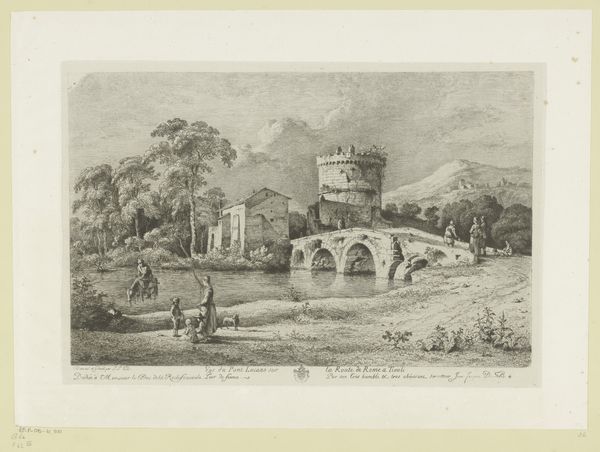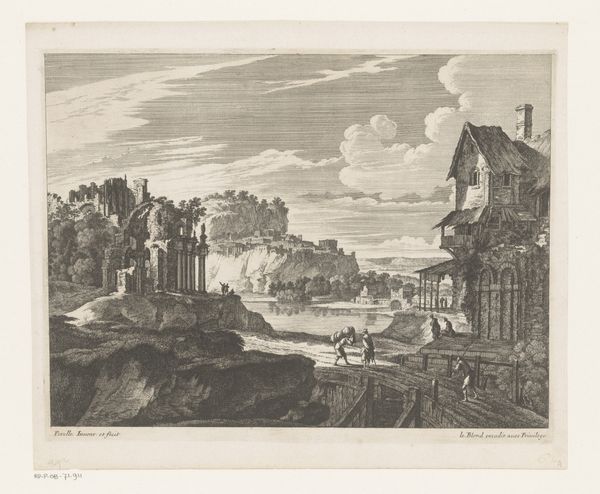
Dimensions: height 391 mm, width 539 mm
Copyright: Rijks Museum: Open Domain
Curator: Here we have François Vivares's "View of the Tomb of Caecilia Metella near Rome," an engraving and etching dating from around 1746-1747. What strikes you about it initially? Editor: The stillness, almost sepulchral, of the scene. And that stark contrast between the massive, permanent architecture and the fragility of the figures milling about. Curator: Absolutely. It’s neoclassical, aiming for this ideal of measured grandeur, but what interests me are the material realities. Look closely—the lines, the textures achieved by engraving and etching, labor-intensive processes that were democratizing image production, bringing these grand tours 'home', so to speak. Editor: True. Consider the role this image would have played in cultivating a particular taste, a desire for these historical monuments, almost functioning as proto-tourism propaganda in print. And, in a way, participating in the construction of a sort of ideal ‘Rome’ itself. Curator: Which brings us back to this imagined stillness. There's an order, a kind of melancholy beauty here—it’s not a purely objective view. I feel Vivares is capturing more than just a place, but a feeling, an atmosphere, steeped in the romance of the past. Editor: I see how that perspective is cultivated and made legible. It is important to recall this image's connection to a network of production, dissemination, and ultimately consumption of artistic value at play, as people buy, trade and discuss impressions such as this one. The physical ink pressed onto paper gives concrete form to desires both material and historical. Curator: I think it wonderfully encapsulates how even supposedly objective views are filtered through so much-- our desires, our dreams. And of course the materials we employ. Editor: Indeed; and ultimately remind us about all we share—a visual document shaped both by our past and ever evolving presents.
Comments
No comments
Be the first to comment and join the conversation on the ultimate creative platform.

